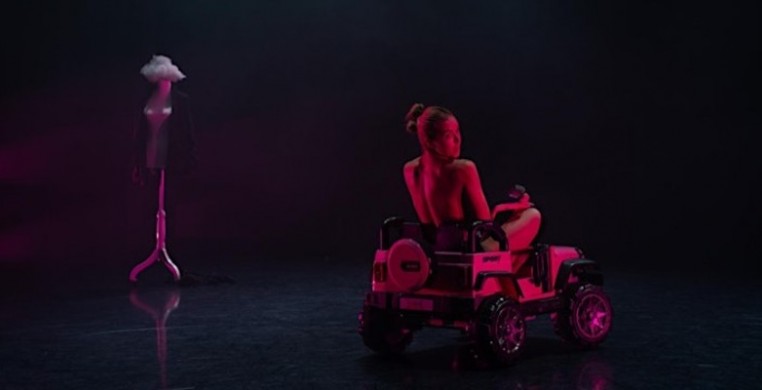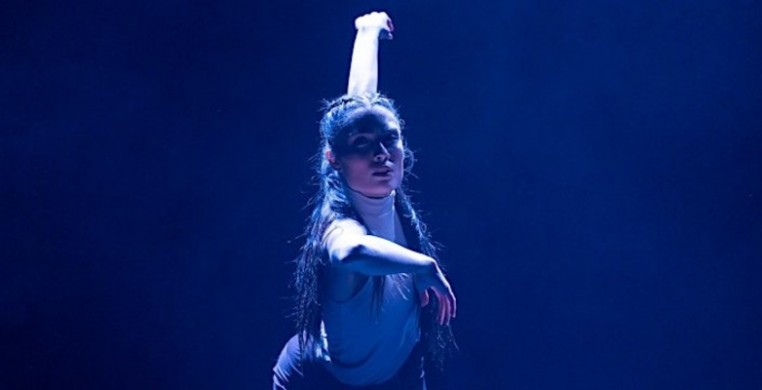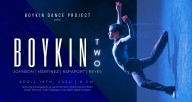Chicago is fortunate to have a vast dance scene, with various companies encompassing a wide variety of genres that audiences can enjoy. However, this access to professional dance is not a universal experience. Boykin Dance Project is trying to bridge this gap between a city-centric dance world and rural areas not yet acquainted with the true potential of live professional dance.
Launching into its second season, the Boykin Dance Project, led under the Artistic Direction of Brian Josiah Martinez, formerly of MARA.PAR Dance Theater, is showcasing Boykin TWO at the Ann Barzel Theater located within Visceral Dance Center on April 19th. The company will showcase a diverse program of five pieces choreographed by Martinez , Abdiel Figueroa and Alysia Johnson of Hubbard Street Dance, and Justin Rapaport of Ballet BC.
Utilizing a wide range of music and styles, this program will be a collage of artistry meant to celebrate and share the magical experience of live dance. In an interview with See Chicago Dance, Martinez and the artists provided insight into the company and the featured artistic works.
Boykin’s mission to spread dance into more rural settings began with Brian Martinez growing up on “Boykin Blvd,” the inspiration for the company’s name, in the small town of Mobile, AL. There was a lack of professional dance available to him growing up, and he only experienced the true scale of what dance had to offer when he moved to Chicago in his twenties and saw Hubbard Street Dance Chicago perform for the first time.
It was this exposure to the professional dance world that inspired Martinez to create the Boykin Dance Project and bring live professional dance to his hometown and similar communities – a way to make dance “equitable for everyone, no matter location.”
During the company’s first season, they performed Boykin ONE in Martinez’s hometown of Mobile, AL and he described the audience reaction as an intense “hunger,” emphasizing that “audience in Mobile, and other small towns, crave [the art that] they don’t have.” Smaller communities may not have the personal relationship or technical vocabulary with dance that those in the city may have, but they still possess a strong desire to experience and appreciate the arts.
With plans to take Boykin TWO to “audiences that don’t have [direct] accessibility,” the program is meant to be a celebration of the many different aspects of dance. With five distinct pieces that range from comedic, to solemn, to joyful, the program is meant to encapsulate as much emotional and artistic range as possible for audiences to enjoy.
 "Nonsense," with dancer Kara Hunsinger; Photo by Michelle Reid
"Nonsense," with dancer Kara Hunsinger; Photo by Michelle Reid
A returning piece from the original program was the audience favorite “Nonsense!,” choreographed by Martinez, which explores the nonsensical nature of dreams. Described by Martinez himself as “silly” and “not meant to be taken seriously,” this piece is a fever dream come to life.
Dancer Ashley Rivette also shared her thoughts, describing the work as “a manifestation of theatricality,” with the performance using surreal imagery and movement to encapsulate the ludicrous nature of dreams – from a Barbie Jeep being driven across the stage while “Barbie Girl” plays in the background, to dancers comically acting out the all-too-real nightmare of being “naked” on stage, to a monologue of completely random words spoken with a strong conviction. It is a cohesive, absurdist experience that playfully encapsulates the randomness of dreams and will leave audiences smiling.
The solo “Alexandra,” choreographed by Abdiel Figueroa Reyes and performed by Hanna DiLorenzo, provides a calmer tone to the program. Dedicated to Alexandra Wells, the Director of Artist Training with Hubbard Street Dance Chicago, who influenced both Martinez and Reyes’ dance careers, this piece evokes bittersweet feelings of longing and loss. Set to the soft flourishes of a piano, the movement ebbs and flows like water, with DiLorenzo executing a series of technically difficult hinges and extensions with ease – her gaze always looking beyond the audience towards something, or someone, we can’t see.
The duet “Overlooked,” choreographed by Alysia Johnson and performed by Ashley Rivette and Lieana Sherry, is a jazz piece meant to empower the dancers and the audience. Rivette described the movement as “intricate and textured” and the difficulties of “feeling grounded within the chaos.” When executed successfully, she expresses how powerful the dance feels – exclaiming it makes her feel “strong” and like “a bit of a badass.”
Martinez expressed his love for this piece, calling Alysia a “master at crafting space and [positioning] the bodies.” He expresses the unique nature of the duet and how it does not rely on traditional partnering techniques, but instead focuses on “contact and negative space” – dancing with one another but almost separately.
“Boléro,” titled after the selected music by French composer Maurice Ravell, is a full company piece choreographed by Martinez that adds a playful twist to the usually somber music. Creative Assistant Kara Hunsinger described the piece’s inception as a familial “1960s household vibe” that has since evolved and leaned more into the visual intrigue of movement – with an emphasis on “pleasing the eye.” She also added that by leaning into “goofy vibes,” they offer an interesting juxtaposition to other, more serious, dance interpretations of the iconic Boléro score.
Martinez himself hesitated while describing the piece. Initially calling it a “movement meditation” but then correcting himself and stating that “it is more than [just] slow [movement], it’s calming, it’s relaxing.”
 "Nonsense," with Boykin company dancers; Photo by Michelle Reid
"Nonsense," with Boykin company dancers; Photo by Michelle Reid
The final piece by Justin Rapaport was simply known as the “mystery piece.” At the time of the interviews, the piece had yet to be choreographed but the excitement over its inclusion could be felt throughout the room. There were some ideas for what this mystery piece might include, with potential music that ranged between “classical music, avant-garde, and repetitive and moody contemporary music.”
Rapaport earned his inclusion within the program through an audition process where he was chosen out of 50+ submissions. The company’s decision to hold auditions, as Hunsinger explained, was to “give [the] opportunity to people that don’t [often] get to choreograph” and to include “a diverse group of choreographers from different spaces” to show rural audiences more than “just Chicago choreographers.”
Martinez expressed the feeling of “just knowing” that Rapaport was the one when he saw his audition video. He described the quality of Rapaport’s work, listing the “intricate in-and-out of movement, beautiful intensity, and ability to craft the space around him” as the main reasons for being drawn to Rapaport’s repertoire. While this piece will remain a mystery till its premiere, the talent within the company and the artistic potential of Rapaport are sure to make this performance a hit.
“Boykin TWO” by Boykin Dance Project premiers at Ann Barzel Theater, 3121 N Rockwell St. The one-night performance is on Apr. 19 at 8 p.m. Tickets are $30. For more information click the event link below or visit boykindance.org.



